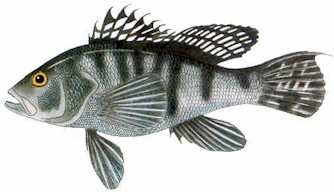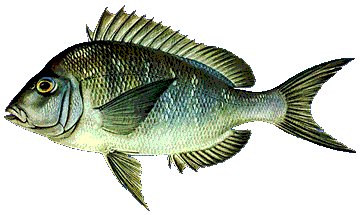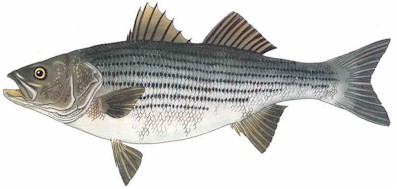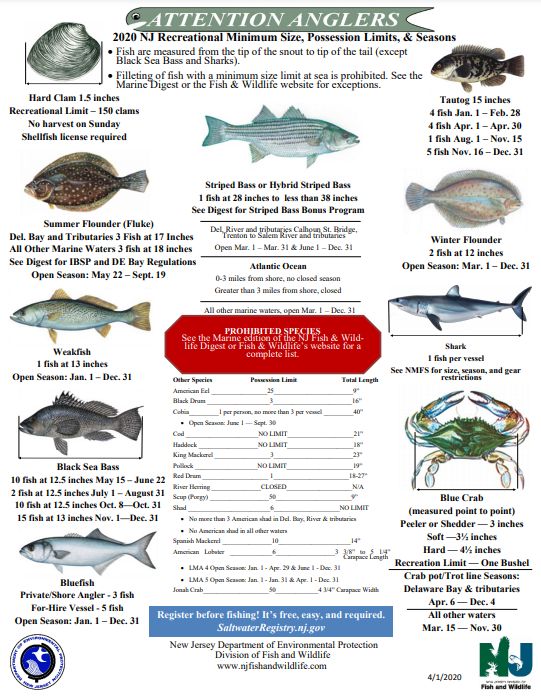Sea Basses & Porgies
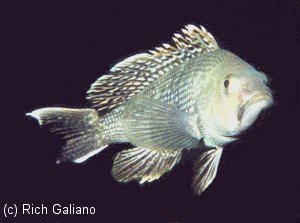
Although they are both called basses, Stripers and Black Sea Bass are not closely related. Striped Bass are more closely related to ocean perches, while Black Sea Bass are related to tropical basslets and groupers. The Striped Bass is the largest member of the sea bass family, often called "temperate" or "true" bass to distinguish it from species such as largemouth, smallmouth, and spotted bass which are actually members of the sunfish family Centrarchidae. Porgies are much more highly compressed ( side-to-side ) than basses, and are not closely related.
Many, if not all, Sea Basses share the odd trait of changing sex from male to female ( protandry ) or female to male ( protogyny ), depending on the species. Oddly, Striped Bass undergo a sexual transformation that is the opposite of the Black Sea Bass. The reason lies in their different lifestyles. Black Sea Bass are bottom-dwellers, and the males are territorial. Bigger fish can claim better territories, so it is an advantage for a big individual to become a male. Stripers on the other hand are not territorial. In their case, bigger fish can produce more eggs, so it is advantageous for big Stripers to be females.
All these fishes all have sharp hard spines in the dorsal and anal fins, as a defense against predators. The spines make the fish much more difficult to swallow, or handle, as many a fisherman could tell you.

